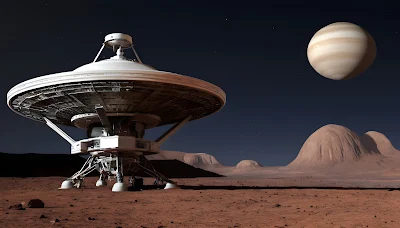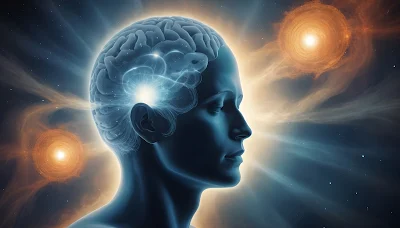Some mysteries in science
These collections have attracted significant attention and have been studied and discussed extensively. :
1. The Origin of the Universe: Understanding how the universe began, including the Big Bang theory and concepts like cosmic inflation, dark matter, and dark energy, remains one of the most profound mysteries in science.
2. The Nature of Dark Matter and Dark Energy: These elusive substances make up the majority of the universe's mass-energy content, yet their exact nature and properties remain unknown. Solving this mystery could revolutionize our understanding of the cosmos.
3. The Search for Extraterrestrial Life: The question of whether life exists beyond Earth is a fundamental mystery that captivates the imagination of many. Efforts to detect exoplanets in habitable zones and the exploration of places like Mars and Europa for signs of life are ongoing.
4. The Mystery of Consciousness: Understanding how and why consciousness arises from the physical processes of the brain is a deeply challenging problem in neuroscience and philosophy.
5. The Bermuda Triangle: While not a scientifically recognized mystery, the Bermuda Triangle, an area in the western part of the North Atlantic Ocean where numerous ships and aircraft have allegedly disappeared under mysterious circumstances, has captured the public's imagination and led to various theories and investigations.
These are just a few examples, and there are countless other mysteries in science that continue to intrigue and inspire researchers and the general public alike.
The Origin of the Universe
1. Big Bang Theory:
- Foundational Concept: The prevailing scientific model for the origin of the universe is the Big Bang theory, which posits that the universe began as an extremely hot and dense state approximately 13.8 billion years ago.
- Expansion of the Universe: According to the Big Bang theory, the universe rapidly expanded and cooled over time, leading to the formation of matter, energy, and the structures we observe today, such as galaxies, stars, and planets.
- Cosmic Microwave Background (CMB): Evidence supporting the Big Bang theory includes the discovery of the cosmic microwave background radiation, which is the residual heat left over from the early universe's hot, dense state.
2. Inflationary Cosmology:
- Inflation Theory: Inflationary cosmology proposes that the universe underwent a brief period of extremely rapid expansion (called cosmic inflation) in the first fraction of a second after the Big Bang.
- Explains Observations: Inflationary theory helps to explain certain features of the universe, such as its large-scale homogeneity, isotropy, and the absence of magnetic monopoles.
3. Cosmic Evolution:
- Formation of Structure: Over billions of years, matter in the universe clumped together under the influence of gravity, forming galaxies, stars, and eventually planets.
- Stellar Evolution: Within galaxies, stars formed from clouds of gas and dust, undergoing nuclear fusion to produce energy. Stars evolve over time, eventually leading to processes such as supernova explosions and the formation of heavy elements.
4. Multiverse Hypothesis:
- Multiverse Theory: Some theories in cosmology suggest the possibility of a multiverse, where our universe is just one of many universes that exist within a larger multiverse.
- String Theory and M-theory: Concepts from theoretical physics, such as string theory and M-theory, propose the existence of multiple dimensions and parallel universes.
5. Open Questions and Future Research:
- Dark Matter and Dark Energy: The nature of dark matter and dark energy, which together make up the majority of the universe's mass-energy content, remains one of the most significant mysteries in cosmology.
- Cosmic Origins: Scientists continue to investigate the earliest moments of the universe, seeking to understand what, if anything, preceded the Big Bang and how the laws of physics operated under such extreme conditions.
6. Philosophical Implications:
- Existential Questions: The origin of the universe raises profound philosophical questions about the nature of existence, the origin of life, and humanity's place in the cosmos.
- Cosmic Significance: Exploring the origin of the universe provides insights into our understanding of reality and the fundamental principles that govern the universe.
The Nature of Dark Matter and Dark Energy
Dark Matter:
- Observational Evidence: Dark matter was first proposed to explain the observed gravitational effects that cannot be accounted for by visible matter alone. Observations of the rotational speeds of galaxies, gravitational lensing, and the large-scale structure of the universe all point to the existence of dark matter.
- Composition: Despite its name, dark matter does not emit, absorb, or reflect electromagnetic radiation, making it invisible and detectable only through its gravitational effects. Its exact composition remains unknown, but various theories suggest candidates such as weakly interacting massive particles (WIMPs), axions, or sterile neutrinos.
- Role in Cosmology: Dark matter plays a crucial role in cosmology by influencing the formation and evolution of structures in the universe. It provides the gravitational scaffolding necessary for galaxies and galaxy clusters to form.
- Detection Efforts: Scientists are actively searching for dark matter particles through direct and indirect detection experiments. Direct detection involves searching for rare interactions between dark matter particles and ordinary matter in underground laboratories. Indirect detection looks for the products of dark matter annihilation or decay, such as gamma rays or cosmic rays.
Dark Energy:
- Discovery: The existence of dark energy was inferred from observations of distant supernovae in the late 1990s. These observations revealed that the expansion of the universe is accelerating rather than slowing down, as previously expected.
- Cosmic Acceleration: Dark energy is thought to be responsible for the observed accelerated expansion of the universe. It behaves as a repulsive force that counteracts the gravitational attraction between matter, causing galaxies to move away from each other at an accelerating rate.
- Nature and Origin: The nature of dark energy is one of the most profound mysteries in modern physics. It is often associated with the cosmological constant, a term in Einstein's equations of general relativity. However, attempts to understand its origin and fundamental properties have led to various theoretical frameworks, including vacuum energy, quintessence, and modified gravity theories.
- Cosmological Consequences: Dark energy has profound implications for the future evolution of the universe. Depending on its properties, it could lead to a "Big Rip" scenario where the expansion of the universe accelerates to the point of tearing apart all bound structures, including galaxies, stars, and eventually atoms.
The Search for Extraterrestrial Life
1. Historical Context:
- Ancient Beliefs: Humans have speculated about the existence of extraterrestrial life for centuries, with ancient civilizations often incorporating myths and legends about beings from other worlds.
- Scientific Inquiry: The modern scientific search for extraterrestrial life began with the development of astronomy and the realization that other planets in our solar system could potentially harbor life.
2. Exoplanet Discoveries:
- Kepler Mission: The Kepler Space Telescope, launched by NASA in 2009, revolutionized our understanding of exoplanets by discovering thousands of them orbiting distant stars.
- Habitable Zone: Scientists focus on exoplanets located within the habitable zone of their host stars, where conditions may be suitable for liquid water and potentially life as we know it.
3. Astrobiology:
- Interdisciplinary Field: Astrobiology is the scientific study of the origin, evolution, distribution, and future of life in the universe. It combines elements of astronomy, biology, chemistry, and geology.
- Extreme Environments: Astrobiologists study extreme environments on Earth, such as deep-sea hydrothermal vents, acidic hot springs, and Antarctic ice, to understand the limits of life and where it might exist elsewhere.
4. Techniques for Detection:
- Direct Imaging: Telescopes are used to directly image exoplanets and analyze their atmospheres for signs of life, such as oxygen, methane, or other biomarkers.
- Transit Method: Exoplanets passing in front of their host stars cause a slight dimming of starlight, allowing scientists to infer their presence and characteristics.
- Radio and Optical SETI: The Search for Extraterrestrial Intelligence (SETI) uses radio and optical telescopes to search for artificial signals or patterns of light that may indicate the presence of intelligent civilizations.
5. Mars and Other Solar System Bodies:
- Mars Exploration: Numerous robotic missions have been sent to Mars to search for signs of past or present life. Recent discoveries include evidence of ancient liquid water and organic molecules.
- Ocean Worlds: Moons such as Europa (around Jupiter) and Enceladus (around Saturn) have subsurface oceans that may harbor microbial life. Future missions will explore these ocean worlds for signs of life.
6. Challenges and Future Prospects:
- Technological Limitations: Detecting extraterrestrial life, especially microbial or primitive forms, remains challenging due to technological limitations and the vastness of space.
- Interstellar Travel: The search for extraterrestrial intelligence also involves considering the possibility of interstellar travel by advanced civilizations, which could lead to direct contact.
- Future Missions: Planned missions, such as the James Webb Space Telescope, the Mars Sample Return mission, and missions to Europa and Enceladus, will further advance our understanding of the potential for life beyond Earth.
The Mystery of Consciousness
1. Definition of Consciousness:
- Subjective Experience: Consciousness refers to the subjective experience of being aware of oneself and one's surroundings, including thoughts, feelings, sensations, and perceptions.
- Qualia: Consciousness also encompasses qualia, which are the subjective qualities of experiences, such as the redness of an apple or the pain of a headache.
2. Philosophical Perspectives:
- Dualism: Historically, many philosophers proposed dualistic theories of consciousness, suggesting that consciousness is distinct from physical processes and may be associated with an immaterial soul or mind.
- Materialism: Materialist theories, on the other hand, posit that consciousness arises from physical processes in the brain, such as neural activity and information processing.
3. Neural Correlates of Consciousness:
- Brain Activity: Advances in neuroscience have led to the identification of neural correlates of consciousness, specific patterns of brain activity that are associated with conscious experiences.
- Global Workspace Theory: According to the global workspace theory, proposed by Bernard Baars, consciousness arises from the global integration and broadcasting of information within the brain's neural networks.
4. The Hard Problem of Consciousness:
- Challenges: The "hard problem" of consciousness, famously articulated by philosopher David Chalmers, refers to the difficulty of explaining why and how subjective experiences arise from physical processes.
- Qualia and Phenomenal Consciousness: The hard problem involves understanding the nature of qualia and phenomenal consciousness, which defy easy explanation in purely physical terms.
5. Theories of Consciousness:
- Integrated Information Theory (IIT): Developed by Giulio Tononi, IIT proposes that consciousness arises from the integration of information within complex networks of neurons, leading to the emergence of unified conscious experiences.
- Higher-Order Theories: Higher-order theories suggest that consciousness involves higher-order representations of mental states, where one is aware of being aware.
- Panpsychism: Some philosophers propose panpsychism, the idea that consciousness is a fundamental aspect of the universe and is present in all matter to some degree.
6. Altered States of Consciousness:
- Sleep and Dreaming: Studying altered states of consciousness, such as sleep and dreaming, provides insights into the neural mechanisms underlying consciousness.
- Psychedelic States: Recent research on psychedelic substances like psilocybin and LSD has shed light on the neural basis of consciousness and the potential for altered states to induce profound subjective experiences.
7. Ethical and Practical Implications:
- Ethical Considerations: Understanding consciousness has ethical implications for issues such as the treatment of patients with disorders of consciousness and the development of artificial intelligence.
- Philosophical and Existential Questions: Exploring the mystery of consciousness raises profound philosophical and existential questions about the nature of reality, free will, and the human condition.
The Bermuda Triangle
1. Geographic Location:
- Location: The Bermuda Triangle is roughly bounded by Miami (Florida), Bermuda, and Puerto Rico, forming a triangular area in the western part of the North Atlantic Ocean.
- Size: The exact size of the Bermuda Triangle varies depending on different sources, but it typically encompasses an area of around 500,000 to 1.5 million square miles (1.3 to 4 million square kilometers).
2. Disappearances and Legends:
- Unexplained Disappearances: The Bermuda Triangle gained notoriety due to numerous reports of ships, aircraft, and even entire crews disappearing without a trace while passing through the region.
- Flight 19: One of the most famous incidents occurred in 1945 when five U.S. Navy bombers, known as Flight 19, vanished during a training exercise. A rescue plane sent to search for them also disappeared.
- USS Cyclops: In 1918, the USS Cyclops, a U.S. Navy cargo ship, vanished in the Bermuda Triangle with 309 crew members on board, leaving no wreckage or clues to its fate.
3. Explanations and Theories:
- Natural Phenomena: Various natural explanations have been proposed for the disappearances, including magnetic anomalies, underwater methane hydrates, and sudden, violent storms known as "rogue waves."
- Human Error: Some incidents may be attributed to human error, navigational mistakes, or equipment failures, rather than mysterious forces.
- Skepticism: Many scientists and researchers are skeptical of the Bermuda Triangle's reputation as a paranormal or mysterious area, pointing out that similar disappearances occur in other parts of the world.
4. Popular Culture and Myths:
- Media Attention: The Bermuda Triangle has captured the public imagination and has been the subject of numerous books, documentaries, and films exploring its mysteries.
- Mythological Associations: The Bermuda Triangle has been linked to various mythological and supernatural explanations, including UFOs, Atlantis, and portals to other dimensions.
5. Scientific Investigations:
- Research Efforts: Despite its notoriety, scientific investigations into the Bermuda Triangle have found no conclusive evidence to support the existence of mysterious phenomena.
- Lack of Statistical Anomalies: Statistical analysis of the region's disappearance incidents often reveals no significant difference from other heavily trafficked maritime areas in terms of accident rates.
6. Conclusion:
- Debated Mystery: The Bermuda Triangle remains a debated mystery, with believers attributing disappearances to paranormal or unexplained phenomena, while skeptics argue for natural or human-caused explanations.
- Cultural Icon: Regardless of the scientific evidence, the Bermuda Triangle continues to be a cultural icon and a source of fascination and speculation for people around the world.




